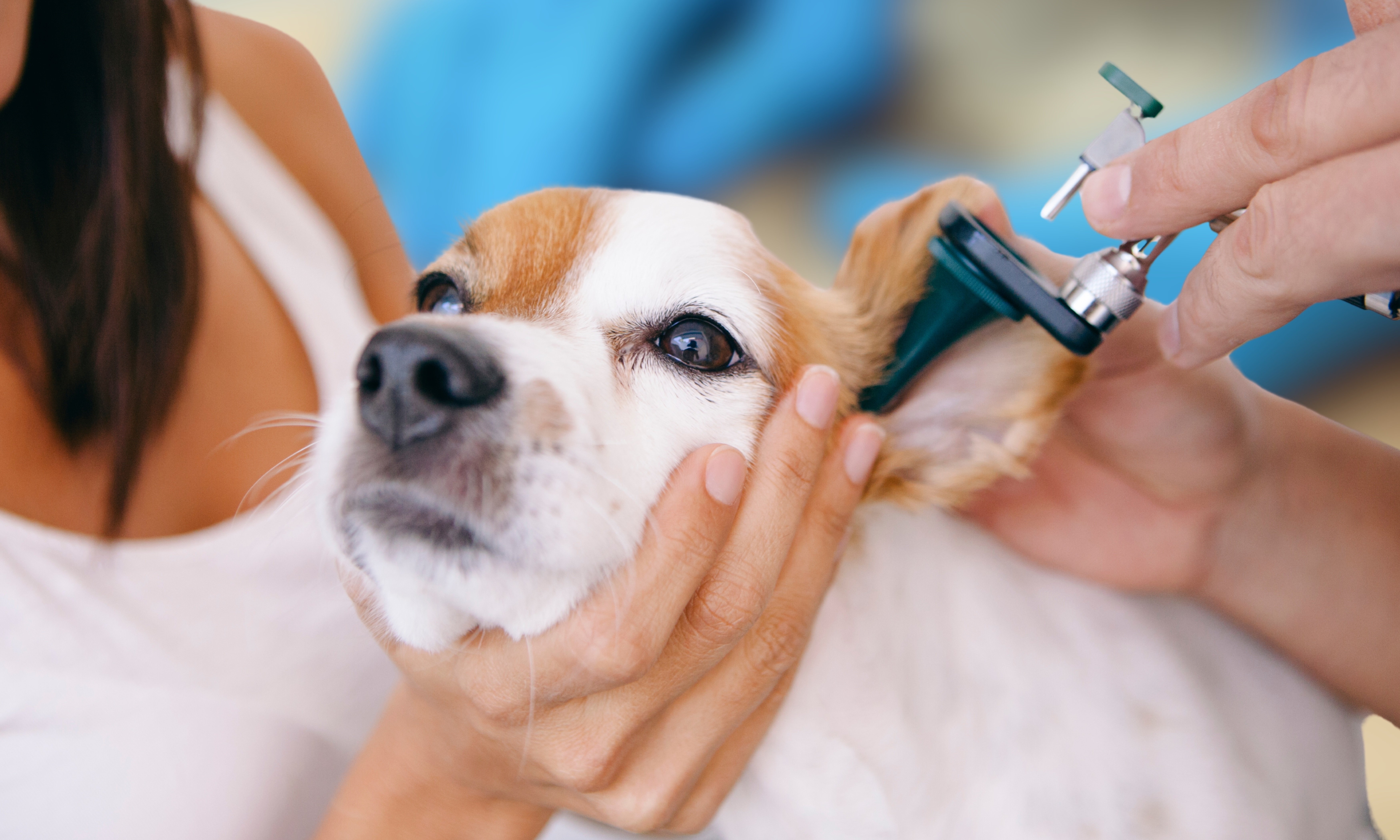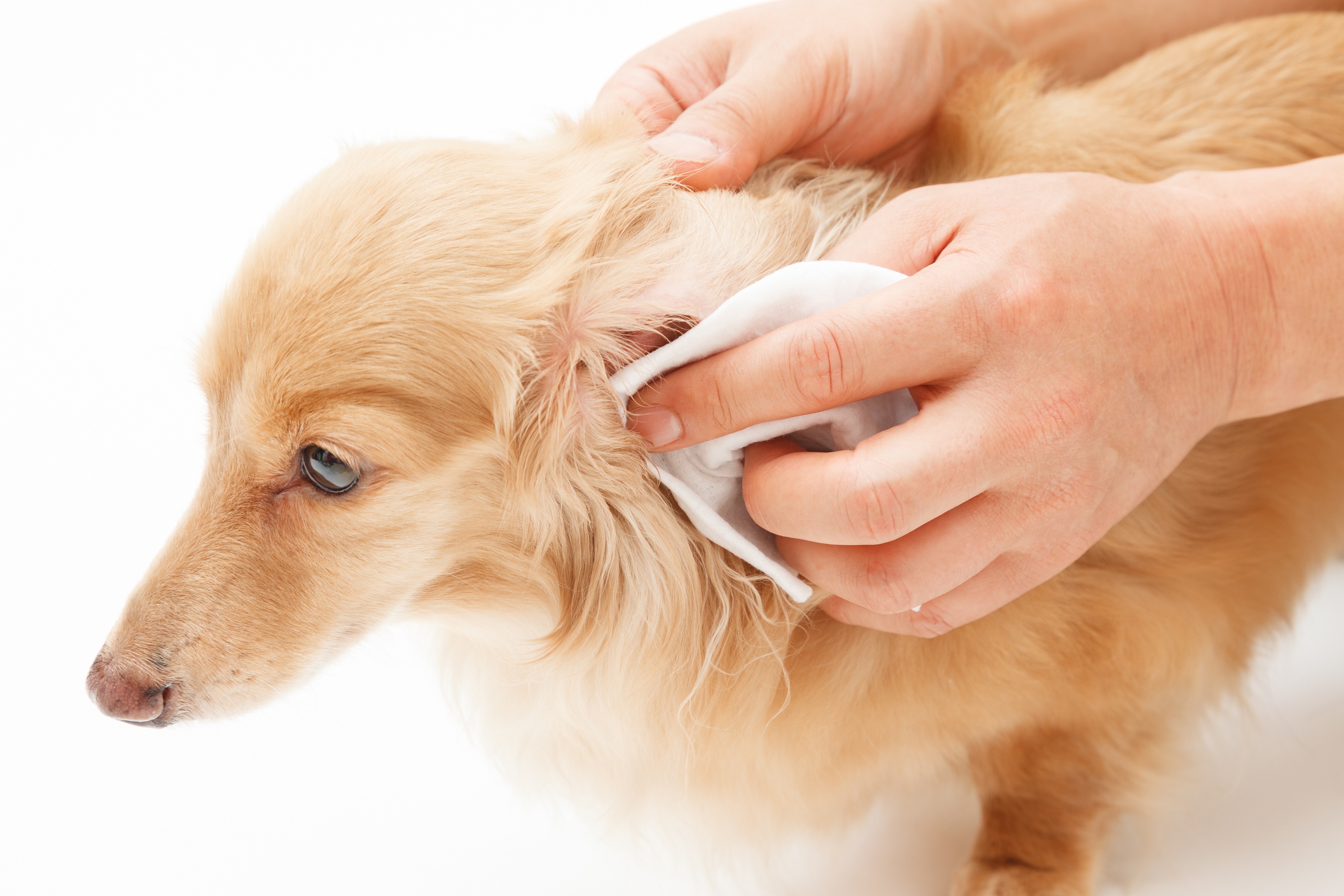
Pre-treatment Otitis in Companion Animals
While there are numerous excellent options of topical therapies that will tackle otitis externa at its core, it is essential to clean and prepare the ear so they can act efficiently.
Successful otitis externa treatment starts with proper ear preparation to ensure that topical therapies reach their target and work effectively. Pre-treatment cleaning is essential to remove cerumen, debris, biofilm, and infectious material, allowing antimicrobial, antifungal, and anti-inflammatory treatments to penetrate deeper into the ear canal. Without this step, excess wax and debris can block medication absorption, leading to incomplete treatment and recurrent infections.
Why is Pre-Treatment Necessary?
- Medication Penetration: Accumulated cerumen and debris can obstruct the ear canal, impeding the absorption of therapeutic agents. Pre-treatment cleaning ensures that medications reach their intended targets within the ear canal.
- Reduction of Microbial Load: Cleaning diminishes the population of pathogenic microorganisms, which is essential for resolving infections and reducing the reliance on systemic antibiotics.
- Disruption of Biofilms: Certain pathogens, such as Pseudomonas species, can form biofilms that protect them from antimicrobial agents. Pre-treatment cleaning helps in disrupting these biofilms, rendering the pathogens more susceptible to treatment.
Impact on Antibiotic Resistance
The overuse of systemic antibiotics in otitis cases, especially when biofilms are present, has been linked to increased resistance in common veterinary pathogens such as Pseudomonas aeruginosa, Staphylococcus pseudintermedius, and Escherichia coli (Weese et al., 2019). Studies show that pre-treatment with ceruminolytics and biofilm-disrupting agents enhances the effectiveness of topical antibiotics, reducing the need for systemic treatments and minimizing resistance risks (Goggs et al., 2018).
By incorporating evidence-based pre-treatment protocols, veterinarians can significantly improve treatment success rates, prevent recurring infections, and contribute to antibiotic stewardship in veterinary medicine.
Pre-Treatment Protocol
- Conduct a thorough otoscopic examination and cytology to identify the presence of bacteria, yeast, inflammatory cells, or parasites.
- Use an ear cleaner to reduce debris, bacterial load, and yeast populations, preparing the ear for further treatment.
- Apply a biofilm disruptor to break down biofilms, ensuring medications can reach bacteria hidden in Pseudomonas and Staphylococcus biofilms.
- After cleaning, apply the relevant medication if applicable.
Product selection for pre-treatment of otitis
Effective pre-treatment for otitis requires products that remove debris, cerumen, and biofilm, using antimicrobial agents and biofilm disruptors to optimize therapy. Lowering bacterial and yeast load helps reduce antibiotic reliance, supporting antimicrobial stewardship. Here are the products to keep on hand:
Otodine, a patented ear-cleansing solution combining chlorhexidine and Tris-EDTA, specifically formulated for dogs and cats.
This synergistic combination exhibits potent antibacterial and antifungal properties, effectively managing microbial overgrowth in the ear canal. Chlorhexidine serves as a broad-spectrum antimicrobial agent, while Tris-EDTA enhances its efficacy by disrupting the integrity of bacterial cell walls and biofilms. Studies have demonstrated Otodine's effectiveness against various pathogens associated with canine otitis, including multi-drug resistant strains.
Ghibaudo G, Cornegliani L, Martino PA. Evaluation of the in vivo effects of Tris‐EDTA and chlorhexidine digluconate 0.15% solution in chronic bacterial otitis externa: 11 cases. Vet Dermatol. 2004 Aug;15(s1):65)
Peptivet, available in drops and gel, is an innovative ear solution that combines chlorhexidine, Tris-EDTA, and a novel antimicrobial peptide (AMP2041). This formulation offers broad-spectrum antimicrobial activity against bacteria and fungi, including resistant strains. The inclusion of Vitamin PP (niacin) and Zinc PCA provides soothing and moisturizing effects, aiding in the restoration of the skin barrier and reducing inflammation.
Tris-NAC, a specialized ear cleanser that combines Tris-EDTA with N-acetylcysteine (NAC). This formulation is particularly effective in disrupting and dissolving biofilms, which are often implicated in chronic and recurrent otic infections. By breaking down these biofilms, Tris-NAC® helps to enhance the penetration and efficacy of antimicrobial agents, facilitating more effective treatment outcomes. Its use is especially beneficial in cases where biofilm-producing bacteria are present, as it aids in reducing microbial load and the potential for antibiotic resistance.
